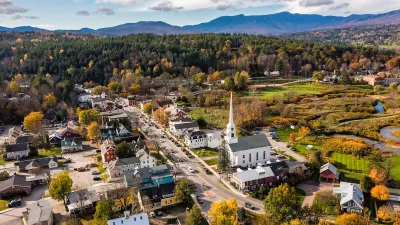The state of Washington is navigating the complex politics of wildlife protection—in this case, wildlife means the territory of an estimated 16 wolf packs.
Eric Wagner reports on the tense, ongoing debate over the habitation of wolves in the state of Washington. Wagner begins the article by recounting an encounter between the "Dirty Shirt" wolf pack in July 2015 that left four cattle dead. Instead of killing the animals, wildlife officials moved the wolves to a different part of their territory. Wagner explains the incident's importance:
"And even though tempers still simmer, the incident shows the difference between wolf recovery in the Northwest compared to the Rocky Mountains or the Southwest. Washington, with its generally more progressive politics, was able to adopt policies that would have had little traction in the Interior West. But even here, thanks to stark urban-rural political divides, the effort’s successes come by way of a very delicate and ongoing balancing act."
The article details the political map that corresponds to the 68 wolves and 16 known packs that live in Washington. That number has a lot to do with the state's management plan, adopted in 2011, "which explicitly aims to expand the wolf population rather than limit or destroy it, and adopts the region’s most ambitious recovery goals," according to Wagner. But the state is split along strong rural vs. urban political lines on the issue.
FULL STORY: Washington welcomes wolves back — across deep political divides

Alabama: Trump Terminates Settlements for Black Communities Harmed By Raw Sewage
Trump deemed the landmark civil rights agreement “illegal DEI and environmental justice policy.”

Planetizen Federal Action Tracker
A weekly monitor of how Trump’s orders and actions are impacting planners and planning in America.

How Atlanta Built 7,000 Housing Units in 3 Years
The city’s comprehensive, neighborhood-focused housing strategy focuses on identifying properties and land that can be repurposed for housing and encouraging development in underserved neighborhoods.

In Both Crashes and Crime, Public Transportation is Far Safer than Driving
Contrary to popular assumptions, public transportation has far lower crash and crime rates than automobile travel. For safer communities, improve and encourage transit travel.

Report: Zoning Reforms Should Complement Nashville’s Ambitious Transit Plan
Without reform, restrictive zoning codes will limit the impact of the city’s planned transit expansion and could exclude some of the residents who depend on transit the most.

Judge Orders Release of Frozen IRA, IIJA Funding
The decision is a victory for environmental groups who charged that freezing funds for critical infrastructure and disaster response programs caused “real and irreparable harm” to communities.
Urban Design for Planners 1: Software Tools
This six-course series explores essential urban design concepts using open source software and equips planners with the tools they need to participate fully in the urban design process.
Planning for Universal Design
Learn the tools for implementing Universal Design in planning regulations.
Caltrans
Smith Gee Studio
Institute for Housing and Urban Development Studies (IHS)
City of Grandview
Harvard GSD Executive Education
Toledo-Lucas County Plan Commissions
Salt Lake City
NYU Wagner Graduate School of Public Service





























